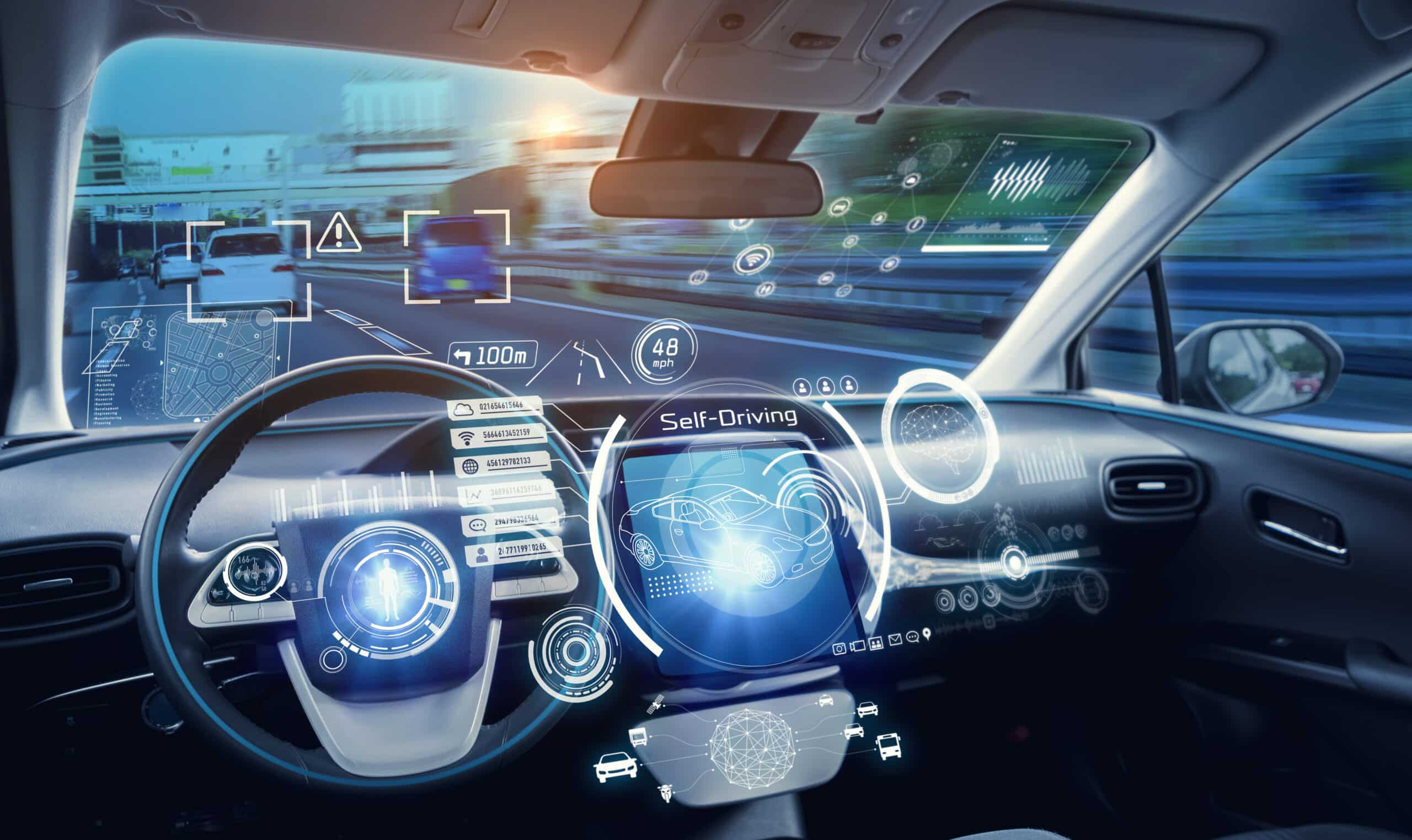IA and the autonomous car: a promising or worrying future?
In an environment characterised by a profusion of technological innovations, as much as by the uncertainties linked to the ensuing regulations, the integration of artificial intelligence into vehicles has become a structural movement, and one that is still in its early stages. However, it already raises many questions, which is why it is worth taking a look at the situation as it stands at the end of 2023.
The autonomous car, the vehicle of the future?
The subject of the autonomous car regularly comes to the fore, bringing with it a host of prejudices that are more or less rooted in reality, and which stem largely from the recurrent presence of this theme in works of science fiction. However, there is no doubt that research is advancing rapidly; after all, with AI (artificial intelligence) being the keystone of the autonomous car, and given the progress made in just a few months by a tool such as ChatGPT, doesn’t it seem more plausible than ever that we are on the brink of a real revolution on our roads?
Before attempting to answer this question, however, it’s worth briefly recalling that there are different levels of autonomy, which have been classified as follows:
- Level 0: No autonomy.
- Level 1: Light assistance, with cruise control.
- Level 2: Automation of certain tasks, such as parking, braking and lane keeping.
- Level 3: Semi-autonomous, with the car able – under certain traffic conditions – to accelerate, brake and overtake without driver intervention, but with the driver remaining attentive.
- Level 4: No driver attention required, whatever the road ahead, with the presence of a steering wheel and pedals so that the driver can regain control if necessary.
- Level 5: No steering wheel or pedals, so no driver attention required. Clearly, this level is still – precisely – the stuff of science fiction, because it hasn’t even been reached yet in the field of aeronautics…
Until recently, only level 2 autonomous driving was legally accepted in France, but cars equipped with level 3 systems are now also allowed on our roads. However, in practice, this level of autonomous driving can currently only be envisaged under specific conditions, notably on roads with separate lanes, in clear weather, without cyclists or pedestrians, and with a maximum speed limit of 60 km/h. In other words, ‘hands-free’ driving will only be possible on wide roads such as motorways and/or ring roads when they are congested. At the same time, manufacturers are stepping up the number of road tests to fine-tune level 3 autonomous vehicles by increments, before moving on to the next logical stage. Although level 4 involves very substantial costs to guarantee the safety of road users in all traffic conditions – including in the heart of urban centers – the emergence of vehicles of this type is only a matter of time.

Is the system 100% reliable?
Let’s be clear: artificial intelligence is already widely deployed in modern cars to improve driving safety, including systems that analyze signs of driver fatigue, mobile phone applications that reward the most cautious drivers with benefits, and ‘connected’ vehicles that can communicate both with each other and with the road infrastructure.
That said, AI is still in its “infancy”, and its application to the automotive industry can best be described as in its infancy. The accidents regularly recorded by Level 2 – or 2+ – vehicles unfortunately bear witness to this, such as the one that occurred on 24 November 2022, in San Francisco, when an autonomous vehicle caused a chain collision after braking suddenly on the motorway for no apparent good reason. There was also the time when the AI perceived the white trailer of a lorry, illuminated by the setting sun, as part of the sky, and therefore did not trigger the automatic braking, the car finally crashing into the obstacle.
This raises a number of questions about the degree of autonomy to be granted to the driving system, and conversely about the legal responsibility incumbent on the driver – or even the manufacturer – in the event of an accident. In fact, no matter how intelligent a robot may be, it is still not capable of filling in an accident report… and if there is bodily injury, isn’t there a systematic risk that the driver will accuse the designer of the system that is supposed to prevent him or her from having an accident? What’s more, there’s a concept in aeronautics that’s as old as the hills, as the saying goes, but which the general public is unfamiliar with: it’s called ‘tombstone mentality’. In practical terms, this means recognising that a non-negligible proportion of the progress made in (flight) safety has been achieved thanks to the analysis of accidents that have plunged (air) transport into mourning over the years. To put it another way, AI will experience failures, sometimes with sad consequences, but this is how it will be able to improve to the point of approaching the Holy Grail of 100% reliability in a few decades’ time.
Whatever the case, the gradual development of the autonomous car is – and will be for many years to come – a structural trend for the whole automotive sector, with a growing need for cutting-edge sensors. This includes the Automotive Aftermarket, because vehicles, whether autonomous or not (and perhaps even more so if they are), will always need high-quality maintenance to maintain their level of safety, both active and passive. So we’ll be there to equip them with these various sensors and do our part to ensure that this transition takes place under the best possible conditions.
Sources: www.tressol-chabrier.com, www.radiofrance.fr, www.phonandroid.com, www.leparisien.fr, www.auto-infos.fr, www.lapresse.ca
- Home
- Aftermarket Activity
- News
- IA and the autonomous car: a promising or worrying future?

